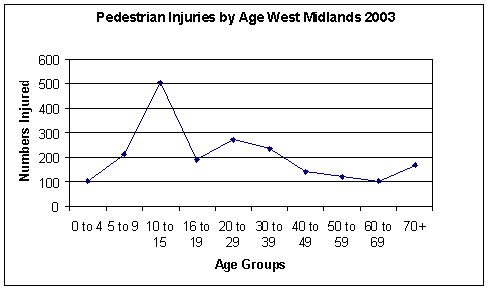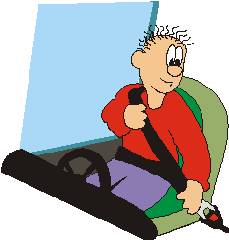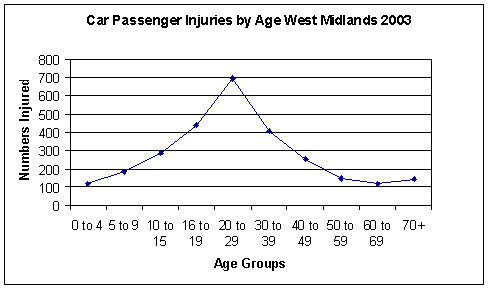When looking at who is involved in road accidents age can often be used to determine who is most at risk. For example, for every mile driven, a 17 year-old male is 7 times more likely to be involved in an accident than a middle-aged man. Below are some facts about age as a pedestrian and when travelling by car.

The start of secondary school, at the ages of 11 - 12, is the most dangerous years for pedestrians (the graph below shows the numbers of pedestrians injured in West Midlands according to their age).

The move from primary to secondary school gives 11-year-olds new independence. They often walk to school with friends rather than with parents, the school journey is longer, and they have greater freedom to be outside and to visit friends on their own. However, this greater independence brings with it a hugely increased risk of being killed or seriously injured in a road accident. By the time they reach the age of 13 they have become more aware of hazards, their social lives change and the risk of an accident reduces as a pedestrian but increases as a car driver or occupant. Some of the reasons for this increased level of risk in cars are given next.

In general children have most of their accidents in cars when being driven by people of their parents' age. But children of 14 and 15 begin to travel with drivers only a couple of years older than they are. Many of these 17 and 18-year-old drivers show off, usually by driving too fast - often because they believe this will impress their friends. Some are driving while underage, or without licences or insurance. Drink and drugs can also be involved. This behaviour, when mixed with the driver's inexperience, can have lethal consequences. The highest number of children being injured on our roads changes from pedestrians to car occupants (see the charts above and below).

Young drivers, especially males, are also a high-risk group on the roads. In an accident a male driver aged 17-20 is 9 times more likely to be at fault than a driver aged 31-40 with the same amount of experience. Research shows that the incidence of road accidents involving learner drivers is very low. However, having passed their tests and driving unaccompanied without L-Plates, these drivers join the highest road accident risk group. This shift in the level of risk can be due to several things including: young drivers (particularly males) consistently over-estimate their own driving ability; they believe others will have crashes in risky situations, but that they are personally too skilled to lose control of the car; research into hazard perception clearly shows that inexperienced drivers can be up to 2 seconds slower in recognising possible dangers compared with experienced drivers.
The high level of risk that young drivers have is reflected in insurance premiums they must pay in order to have their cars on the road. Along with age insurance companies also consider the following when calculating a premium: the gender of the driver, the performance of their vehicle, the number of years they have been driving, the local residential area in which the car will be kept and the use of the car on a daily basis.